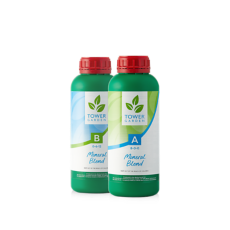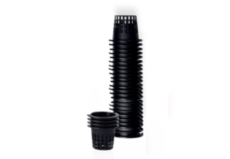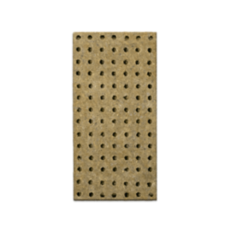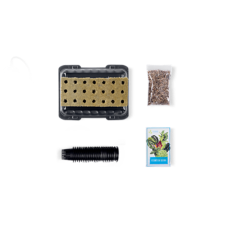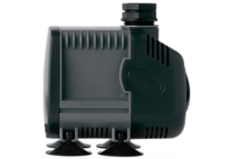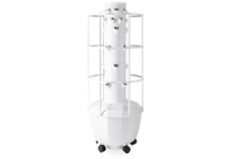Top Crops to Grow Outdoors with Tower Garden
?wid=920&_ck=1666008263906)
Getting to enjoy the literal fruits of your labor in the form of fresh produce is an amazing feeling. Tower Garden makes it easy for you to plant, grow, and harvest your favourite fruits, vegetables, herbs, and flowers.
Using aeroponic technology, Tower Garden can provide up to three times larger harvests in a third of the time while dramatically reducing the amount of water and space you’d need in traditional gardening.
Check out this list of some of our favourite crops to consider planting in your outdoor Tower Garden.
Top Crops to Grow Outdoors with Tower Garden
Growing outdoors with Tower Garden opens the doors to so many different crops, from leafy greens to large fruiting crops. We recommend the following crops for a variety of reasons, but primarily because of their ability to withstand the elements and their versatility in the kitchen.
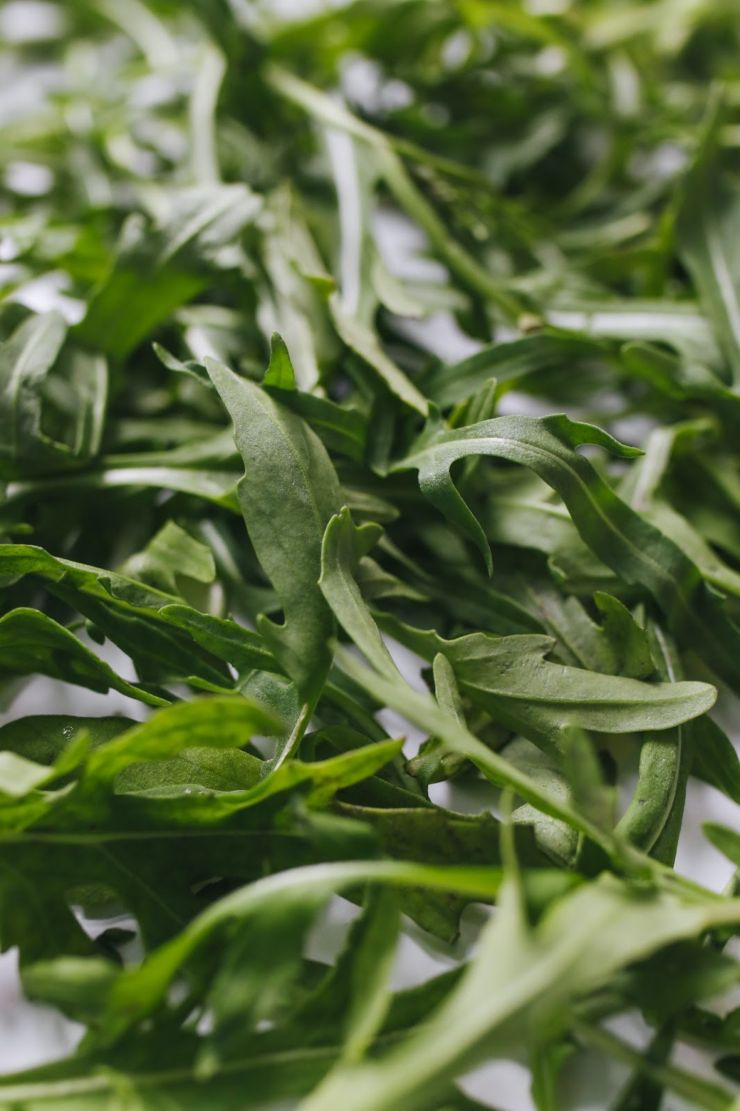
Rocket
Found in recipes and gardens all over the world, this famous leafy green goes great on salads, pizzas, sandwiches, and soups. Not only does it taste great, it’s also extremely nutritious, providing numerous health benefits. It goes without saying that rocket deserves a place in your Tower Garden.
Part of the brassica family, which means it’s related to cauliflower, broccoli, and cabbage, rocket is high in fibre and antioxidants. It’s also high in glucosinolates, which some studies indicate may reduce the risk of developing breast, lung, pancreatic, and prostate cancer. If that weren’t enough, rocket also has more calcium and zinc than kale, a known superfood.
To harvest your rocket, we recommend following these steps:
- Harvest only a few leaves at a time, from the bottom of the plant upward.
- Allow 2–3 leaves to remain so the plant can keep growing.
- Repeat every 2–3 days until the plant bolts, or begins flowering. Flavour will intensify after each harvest.
- After bolting, replace the plant with a fresh seedling. Learn more about bolting here.
?wid=740&_ck=1666008059328)
Basil
Whether you’re growing outdoors or in, make herbs a mainstay of your Tower Garden. Basil in particular is perfectly suited to withstand the elements from early spring to late autumn. Ideal for those who love Italian dishes, this green herb is bursting with flavour and smells great once it’s picked. While there are many basil varieties, the most common and popular versions are in the sweet basil family.
We recommend planting about six seeds per rockwool cube. They should germinate within a week, and they’ll be ready to transplant two weeks after sprouting. Since basil likes to grow upward and outward, we recommend planting basil toward the top of your Tower Garden.
To harvest, simply follow these steps taken from the official Basil Grow Guide by Tower Garden:
- Once your plants have developed 6–8 pairs of true leaves, you can begin harvesting. Do so by pinching (with your fingers) or cutting (with scissors) stem tips to promote branching. Pinch 0.5 cm above where the plant is branching. Whatever you pinch off is your harvest.
- Sometimes you’ll see new leaf growth in the axil of the stem and mature leaf; this is the future branch! Pinch or cut the stem halfway between the lower pair of leaves and the growing tip. If these two sets of leaves are close together, you can feel the knob just below the growing tip and gently roll it off the tip of the stem.
- Once you’ve harvested from your plants twice, you may need to harvest using the above procedure as much as twice a week.
- Keep your basil from flowering for as long as possible through regular pinching! When the plant flowers, it signals the end of the growing cycle.
- To harvest an entire plant, cut the whole plant from the base.
1?wid=639&fmt=png-alpha&bfc=off&_ck=1666008205688)
Chard
We love chard because it’s a great source of vitamins A, B, C, and K. On top of that, it also provides us with much needed calcium, copper, iron, and potassium. It’s not only among the healthiest foods you can eat and easy to grow with Tower Garden, it’s also the perfect addition to any outdoor garden.
When planting chard, whether rainbow, Swiss, or any other variety, plant about four seeds per rockwool cube. Seeds should germinate within 1–2 weeks. And seedlings should be ready to transplant 2–3 weeks after sprouting. Like basil, we recommend planting chard in the top section of your tower.
Ready to go Tower-to-Table? Leaves are most flavourful when the plant is 50–60 days old. But you can begin harvesting leaves when they are 4–5" (10–13 cm) long.
Keep these tips in mind when harvesting chard:
- Cut leaves near the base, being careful not to cut the stems of the inner leaves.
- Harvest the mature leaves first, leaving smaller leaves for continued production.
- Pick no more than 3–5 mature leaves from a plant at a time.
- Harvest often, as this encourages new growth.
- Remove old leaves that have lost their glossy sheen.
?wid=740&_ck=1666008113271)
Cucumbers
Crisp, juicy, delicately flavoured cucumbers are one of the joys of summertime. While this fruiting crop consists mostly of water, it’s also chock-full of vitamins A, B, and C. A perfect way to cool down on the muggiest summer evening, cucumbers make a delicious accompaniment to any lunch or dinner, just sliced and salted.
Cucumbers are ideal for the beginning gardener, because with just a little work, a bumper crop of cukes is yours for the picking. Growing cucumbers in a Tower Garden is even easier than growing them in the ground. In terms of supplies, we highly recommend a support cage to keep these crops from trailing on the ground.
While they may take up to 70 days to harvest after transplanting, once mature, this fruiting crop is relatively straightforward to pick. Simply follow the instructions below:
- Most varieties are mature at 15–25 cm long, but smaller cucumbers are edible, too.
- Using a clean pair of shears, harvest by cutting the stem connecting the cucumber to the vine.
- Be sure to harvest before cucumbers become overripe (smooth, bloated, and yellow).
- Once they begin producing, check your cucumber plants at least twice a week, and harvest frequently to encourage continued production.
- Excessive heat will end fruit production and plant leaves will turn brown. If this happens, remove the cucumber vine from your Tower Garden (because it’s finished growing).
?wid=600&_ck=1666007972459)
Aubergine
A cousin of tomatoes and potatoes, aubergine is a very versatile vegetable. Whether you have a hankering for curry, ratatouille, aubergine Parmesan, or baba ganoush, aubergine is always welcome at the dinner table. Vegetarians sometimes use it as a meat substitute due to its wonderful texture.
Aubergine is healthy, too! It’s high in fibre, has a low glycemic index, contains folic acid and potassium, and is chock-full of antioxidants. Since it grows big, aubergine is perfectly suited for the outdoors, but we recommend growing with a support cage. Aubergine's rich, purple hues also make it a beautiful addition to any outdoor garden space.
Don’t be intimidated by the size, as aubergine is a wonderful crop for beginner gardeners and will produce a consistent harvest of plump, delicious fruit grown conveniently on your back porch to enjoy throughout the growing season. They should be ready to harvest 4–7 weeks after transplanting when the fruits are 15-20cm long.
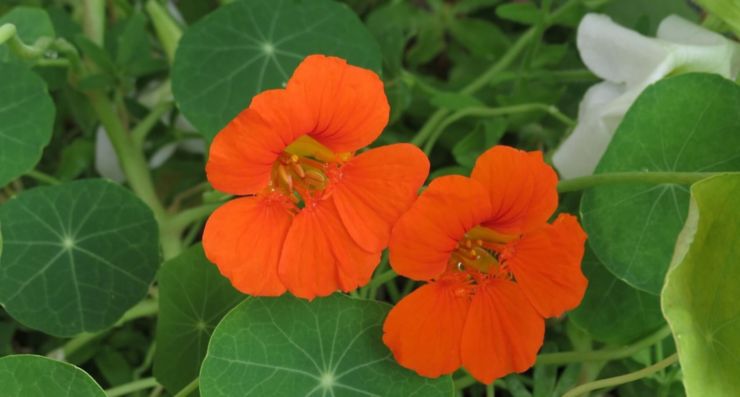
Flowers
There aren’t many things more beautiful than a Tower Garden bursting with colour. From sunflowers to marigolds, choose from hundreds of varieties to transform your Tower Garden into a flower garden.
Beyond looking great, flowers can provide necessary protection and survival traits to your other outdoor crops. For example, many large fruiting crops require pollination. Since flowers attract butterflies, bees, and other natural pollinators, your other crops will benefit from having them around.
Browse the full list of flowers you can grow outdoors with Tower Garden.
1?wid=591&fmt=png-alpha&bfc=off&_ck=1666008165894)
Kale
Kale is known as a superfood, meaning it provides some of the best nutritional value you can get from a plant. Offering incredible amounts of vitamin C, calcium, and potassium, kale earns its place in any Tower Garden for its health benefits alone. Factor in its flavour and the hundreds of recipes that involve kale, and planting this crop is a no-brainer.
Like most members of the brassica family, kale grows best as a cool season crop. In fact, light frosts enhance the vegetable’s flavour, transforming starches into natural sugar. Its ability to withstand various temperatures makes it perfect for any outdoor garden.
To start growing kale, plant about four seeds per rockwool cube. Seeds should germinate within 1–2 weeks. And a couple of weeks later, your kale seedlings should be ready to transplant.
When it comes time to harvest, simply follow these steps:
- Depending on growing conditions, kale should be ready for harvest in as little as four weeks.
- Pick or cut the bottommost leaves first, allowing at least three or four leaves to remain and keep growing.
- Harvest often to encourage continued growth.
?wid=560&_ck=1666007887821)
Lettuce
Lettuce is arguably one of the most popular crops to grow outdoors with Tower Garden. Whether you add it to sandwiches, salads, tacos, or spring rolls, lettuce adds tasty crunch and nutrition to any lunch or dinner. Growing your own lettuce is a super-convenient choice for the home gardener because you can pick exactly how much you need at any given time.
Providing a ton of vitamin A, K, and other nutrients, lettuce is also one of the healthiest things you can grow with Tower Garden — and your Tower Garden comes with packets of gourmet lettuce and Bibb lettuce seeds, so you can start growing your own delicious salads immediately.
Lettuce will take just a couple of weeks until it’s ready for harvest. When you get to that point, you can go follow one of two methods.
- Whole head. Remove the entire plant and net pot from your Tower Garden, or cut all the leaves off at the base of the plant. If you choose this method, be sure to have replacement seedlings ready.
- Individual leaf. This technique keeps the plant alive and encourages continued production. When there are plenty of mature leaves present:
- Harvest only a few leaves at a time, from the bottom of the plant upward.
- Allow 2–3 leaves to remain so the plant can keep growing. Repeat every 2–3 days until the plant bolts, or begins flowering. After bolting, replace the plant with a fresh seedling.
?wid=740&_ck=1666008245439)
Peppers
From curry to chili, peppers are enjoyed worldwide and can be found on all continents in all cultures. As if that’s not enough, peppers are good for you, too, offering carotene, vitamin C, antioxidants, and other nutrients. It’s no surprise that we included this (sometimes spicy) plant on our list of favourite things to grow outdoors with Tower Garden.
As you probably already know, there are many varieties of peppers out there. From the tongue-searing serrano to the sweet bell, peppers come in all shapes, sizes, and levels of spiciness. Fortunately, the process of growing peppers is fairly similar from one type to another.
Harvesting peppers is fairly straightforward, too, making it a perfect crop for beginners and experts alike. Simply follow these steps to harvest your Tower Garden peppers:
- Most peppers change colour from green to red, yellow, purple, or orange when they’re ripe. As the colour of the fruit changes, so does the flavour.
- Peppers don’t continue to ripen once you remove them from the plant, so leave them attached until they’re as ripe as you want them.
- It’s fine to harvest peppers before they reach full maturity. In fact, the immature fruit of some varieties is actually more flavourful.
- Make sure to use a knife or shears to remove the peppers from the plant so you don’t cause injury to the rest of the plant.
- To harvest, make a cut above the cap of the pepper, leaving a portion of the stem attached.

Tomatoes
Not only are they super tasty, tomatoes are a perfect crop for beginning gardeners — because for just a little bit of effort, they deliver a whole lot of reward. Recommended for outdoors because of their size and preferred growing conditions, tomatoes are great summer crops as they go great on salads, burgers, sauces, and so much more.
Not just tasty and flavourful, tomatoes are also extremely nutritious. They contain vitamins A and C, folic acid, lycopene, and much more, and research shows that eating tomatoes can lead to healthier skin and stronger heart health.
Coming in multiple varieties, tomatoes will require some pruning as they grow. To harvest tomatoes, simply follow these steps:
- Fruit will always mature in the order that the tomatoes appear on the truss. The fruit closest to the branch stem will mature first.
- Your first clue that a tomato is ripe is its colour: It should be a deep red, yellow, or purple, depending on the variety.
- Your second clue that a tomato is ripe is its hardness: It’ll soften as it ripens. A perfectly ripe tomato has some give but isn’t mushy.
- The final clue that a tomato is ripe is that it should easily “pop” off the truss when it’s ready to harvest.
- If you like, you can harvest the entire truss by cutting the stem attaching it to the branch just behind the first peduncle (the flower stalk that supports either a cluster or a solitary flower) or by snipping the small peduncle to its individual fruit.


